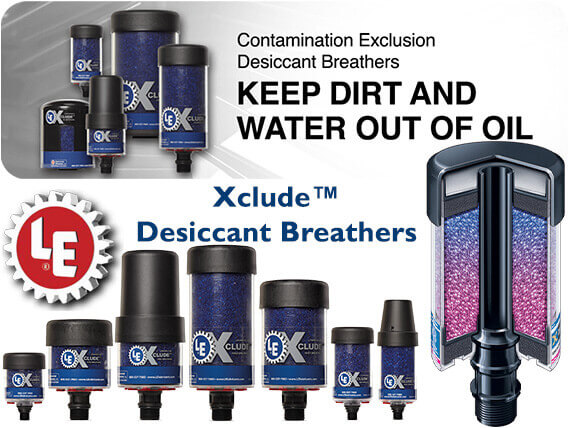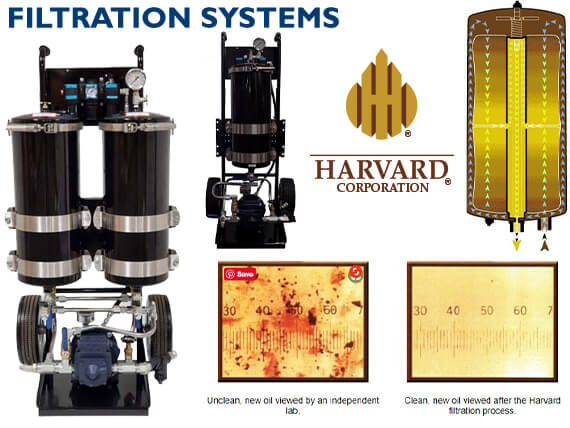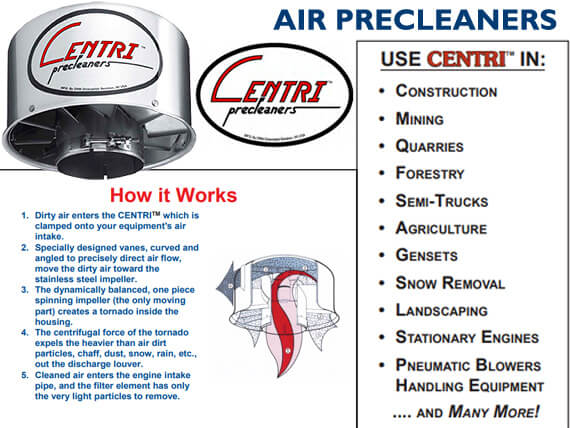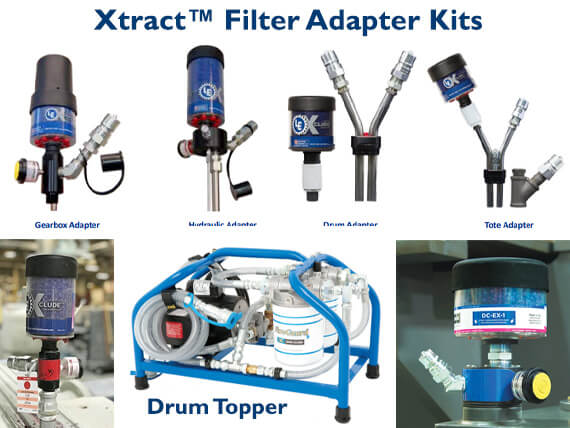- Home
- Lubrication
Systems - Lubricants
& Fluids - Lubrication
Equipment - Contamination
Control - Condition
Monitoring - Services &
Training
![]()
Lubrication Technologies
Your Professional Lubrication Management Team.
Lubrication Technologies, Inc.
120 BOSWORTH ST.
WEST SPRINGFIELD • MA 01089
August 25, 2016
Contamination Control and Fluid Conditioning Services
Clean lubricants increase the life and performance of bearings and ensure the success of your operations.
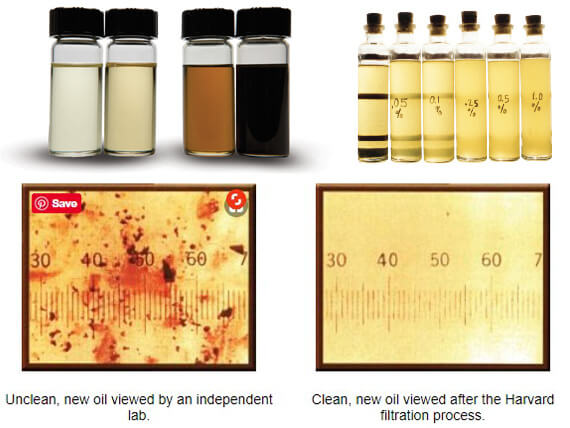 Successful Lubricant Management Programs focus on contamination control. Proper filtration, clean handling and storage solutions are critical to reducing particulates to dramatically extend fluid life and decrease the number of lubricant-related failures.
Successful Lubricant Management Programs focus on contamination control. Proper filtration, clean handling and storage solutions are critical to reducing particulates to dramatically extend fluid life and decrease the number of lubricant-related failures.
Lubrication Technologies, Inc. offers a wide array of by-pass filtration systems, portable filtration solutions, headspace protection, bulk storage and lubricant transfer solutions designed to protect your lubricants and the valuable equipment they function in.
There’s no doubt that equipment reliability is critical. Whether it’s a hydraulic press in a manufacturing plant, or an off road loader in a mine, downtime is costly. Oil contamination, though one of the main causes of premature equipment failure and downtime, is often overlooked. Interestingly, in many cases the greatest cost associated with equipment failure isn’t the component replacement cost, but the cost associated with production downtime. Add to that the cost of the lubricants themselves, whose life is significantly diminished by contamination, and the added costs associated with disposal or recycling them. Neglecting oil contamination can bring an operation to its knees.
There are two ways to deal with contamination: prevent it or remove it. While in most cases it may be important to do both, and of course to also have in place a comprehensive oil sampling and analysis program to monitor the lubricants’ condition and overall machine health, there is no doubt that removing contaminants is significantly more costly than preventing them to begin with. As nearly all gearboxes, reservoirs and storage tanks are designed to breathe, allowing only clean, dry air to enter the system is one of the best measures to prevent contamination. Simply replacing standard breather/filler caps with a desiccant breather immediately reduces and ultimately eliminates moisture and removes particulates down to 3 micron.
Lubrication Technologies, Inc. has assembled a comprehensive range of solutions to help you prevent oil contamination, as well as to remove it. We can also assist you in developing and implementing a Comprehensive Precision Lubrication program, as well as to manage it on site. We can provide you the tools to monitor oil quality and help you design and implement a proper oil sampling process. Lubrication Technologies' oil analysis services can provide you with ongoing analyses and an early warning mechanism that could help you avoid costly equipment failures and downtime, and help you extend the life of your machinery.
Contamination Sources
The two main sources of contamination for your lubricants are dirt/particles and moisture. Various studies have pointed out that 70% of component replacements or ‘loss of usefulness’ is due to surface degradation. In hydraulic and lubricating systems, 20% of these replacements result from corrosion, and the remaining 50% results from mechanical wear.
Most particles start off as dirt that becomes airborne. It finds its way into lubricant and fuel reservoirs, and is later transported to bearings, bushings, seals, valves, and other machine components. There they become key ingredients in abrasion, erosion, and fatigue failures. Particles that manage to enter your lubrication system can cause tremendous damage as they essentially amplify and accelerate the contamination by generating new contaminants (by abrading and wearing out critical components in your equipment that in turn create more contaminants, and so on). The contaminants also cause lubricant degradation, shortening the life of the lubricant and decreasing its ability to lubricate.
Some type and quantity of internal particulate contamination is inevitable and can point to a problem with the machine or a component. Internal particulate contamination includes any particles that contaminate the oil once it has been added to the closed lubrication system - wear particles, seal material, etc. When you have reasonable confidence that external particulate contamination is under control, oil analysis or condition monitoring equipment that identifies a high particle count could be an early warning signal for a developing abnormal wear situation.
Particles, especially catalytic metal particles like copper, iron and lead, increase the oxidation rate and strip the oil of its anti-wear and extreme pressure additives, rust inhibitors and dispersants. Numerous small particles in stable suspension can cause the oil's viscosity to increase, compromising its pumpability and may also promote foaming. Finally, as mentioned earlier, these particles are also abrasive. And as with all particulate contaminants, once in the oil, they accelerate the wear rate dramatically, because abrasive wear can cause a chain reaction in lubricated machinery.
With machine clearances nowadays measured in thousandths of an inch, it doesn't take much contamination to affect bearings and other sensitive components. Even particles that are 10 micron or smaller can disrupt the lubricant film and cause a great amount of wear.
Built-in contaminants from components:
• System assembly
• Cylinders, fluids, hydraulic motors, hoses and pipes, pumps, reservoirs, valves, etc.
Generated contaminants:
• System operation or break-in
• Fluid breakdown
External ingression:
• Reservoir breathing
• Cylinder rod, bearing, component seals
Contaminants introduced to the lubrication system during maintenance:
• Disassembly/assembly
• Make-up oil addition
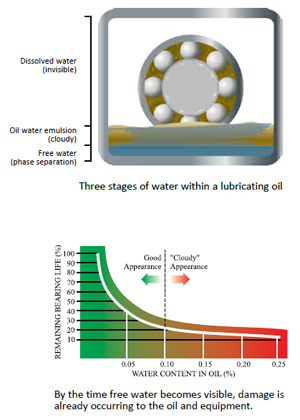 Moisture is also a continuous contamination threat, whether due to general environmental conditions or plant practices (plant wash-down practices can create conditions that lead to moisture ingress). The presence of moisture in lubricants and hydraulic fluids creates multiple problems, including corrosion - that accelerates metal surface fatigue and in itself generates particulate contamination, lubricant additive depletion, viscosity changes (that reduce pumpability and lubricating film thickness oxidation), and sludge formation.
Moisture is also a continuous contamination threat, whether due to general environmental conditions or plant practices (plant wash-down practices can create conditions that lead to moisture ingress). The presence of moisture in lubricants and hydraulic fluids creates multiple problems, including corrosion - that accelerates metal surface fatigue and in itself generates particulate contamination, lubricant additive depletion, viscosity changes (that reduce pumpability and lubricating film thickness oxidation), and sludge formation.
There are many likely sources for water contamination, primarily including leaks (heat exchanger, seals), condensation associated with high airborne humidity, inadequate reservoir covers, temperature reduction (causing dissolved water to turn into free water), and equipment wash-down.
Once water has entered the lubricant, it can exist in one or more of the following forms; dissolved, emulsified, or free water.
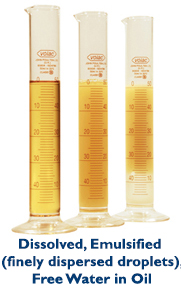 Dissolved water contains water molecules that are dispersed one-by-one through the air in contact with, or within the lubricant. This form of water is invisible to the naked eye.
Dissolved water contains water molecules that are dispersed one-by-one through the air in contact with, or within the lubricant. This form of water is invisible to the naked eye.
Emulsified water contains microscopic pockets of water that are dispersed in stable suspension in the oil. As the oil ages this area of water will expand, causing the lubricant to look cloudy.
Free water is the phase separation of emulsified water. Free water, when mixed with the lubricant, readily settles to the bottom of the equipment.
The most damaging forms of water contamination, to both the lubricant and equipment, are emulsified and free water. Therefore, it is important to measure, and/or remove water contamination prior to the formation of emulsified and free water.
Lubrication Technologies:
An Uncommon Technical Resource!
 Lubrication Technologies provides solutions for all lubricant storage, handling and transfer tasks. As an integral part of a World Class Lubrication Reliability Program, we help our customers increase operational efficiency while reducing the costs associated with lubricant contamination, misapplication and waste.
Lubrication Technologies provides solutions for all lubricant storage, handling and transfer tasks. As an integral part of a World Class Lubrication Reliability Program, we help our customers increase operational efficiency while reducing the costs associated with lubricant contamination, misapplication and waste.
Fluitec - Measure. Consult. Treat.
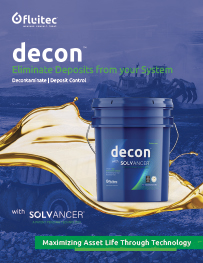 Decon™
Decon™
Integrated with Solvancer patent-pending technology, DECON quickly dissolves varnish and organic deposits from machine internals, effectively decontaminating your material assets. It reduces the oil's vanrish potential and offers long-term protection against deposits and sludge.
Unlike other hydraulic fluid chemical products used for fluid deposits, DECON leaves no residues when it degrades.
Global manufacturers and plants trust DECON to improve operational efficency, minimize downtime, and increase the bottom line.
View Product Information & Technical Data
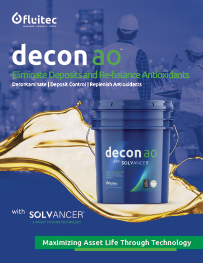 Decon AO™
Decon AO™
DECON™ is customized specifically for your oil and designed to rebalance your additive system. The formulation and treat rate are developed based on your original oil formulation and current condition of the in-service oil. The tailored additive components are blended into a concentrate having a similar viscosity of your in-service oil allowing DECON AO to be blended on-site with no special equipment.
Through oxidative and thermal stresses, the sacrficial antioxidants in an oil will deplete. The by-product of these processes causes varnish. DECON AO will replenish depleted antioxidants into the oil, however the existing varnish-causing molecules also need to be removed.
View Product Information & Technical Data
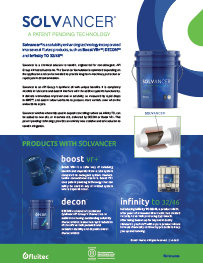 Solvancer®
Solvancer®
Solvancer is a chemical solution to varnish, engineered for non-detergent, API Group I-IV based lubricants. The Solvancer formulation is optimized depending on the application and can be tweaked to provide long-term machinery protection or rapid system decontamination.
Solvancer is an API Group V synthetic oil with unique benefits. It is completely miscible in lubricants and doesn't interfere with the additive system's functionality. It delivers tremendous improvements in solubility, as measured by rapid drops in MPC, and doesn't allow lubricants to produce more varnish, even when the antioxidants expire.
View Product Information & Technical Data
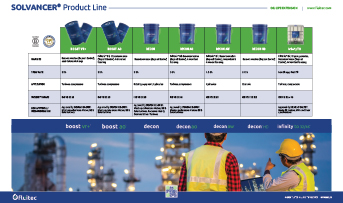 Solvancer Product Line®
Solvancer Product Line®
Find out how Solvancer can protect your hydraulic system, rotating equipment, paper machine system, gearbox, or other cricial lube oil system from the damaging effects of varnish today.
View Product Line & Technical Data
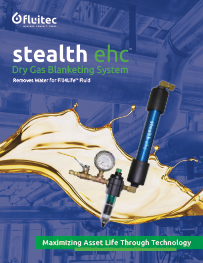 Stealth EHC™
Stealth EHC™
Moisture is the root cause for many contamination issues in EHC systems. Because phosphate esters are hydroscopic, moisture control is a critical step in phosphate ester maintenance. Stealth EHC uses patented technology that removes moisture from phosphate ester fluids by introducing a steady stream of clean, dry air in the reservoir. This enhances reservoir breathing systems by actively and continiously purging and dehydrating the reservoir headspace and removing water from the fluid.
Steath EHC uses the priniciple of mass transfer. When the humidity of the fluid is greater than that of the air (headspace), water molecules transfer to the dry air and the fluid becomes dry.
View Product Information & Technical Data
PRESENTATIONS & ARTICLES
Here is a small portion of our Case Studies, Articles, White Papers, Presentations and more. Are you curious about how things work? If so, then Click to View More!
-
Lube Tech Presentation
Marine/Shipping Applications -
ME - july/aug 2010
Emerging Problem of lubricant Varnish -
Baldor Motor Maintenance
MSSM0274AR/9731AV - Maintenance Manual -
Reprint: Global Cement Mag. oct 2007
Motor Bearings - ABB Switzerland -
TLT: Best Practices jan. 2010
Managing Lubricant Degradation -
UpTime: june/july 11
Automatic Lubrication Systems - Don't Work!?!

